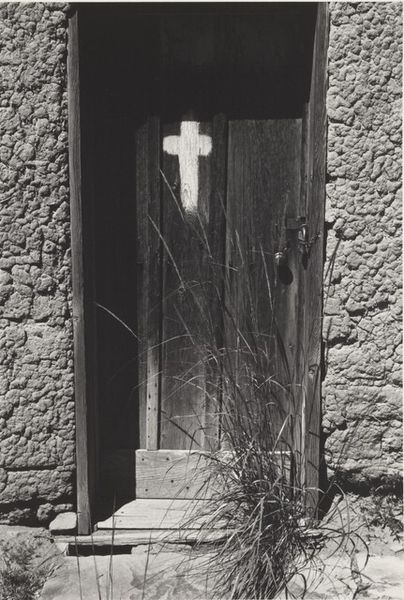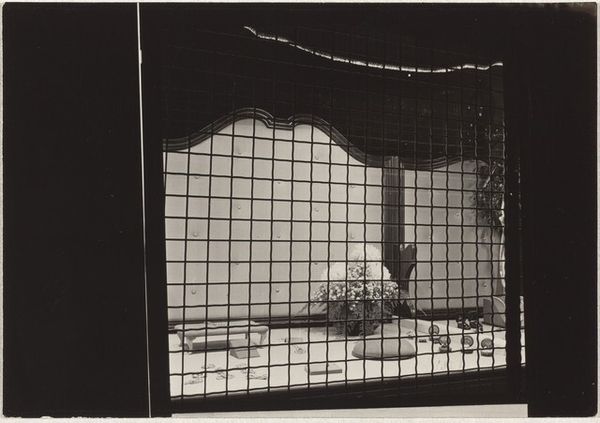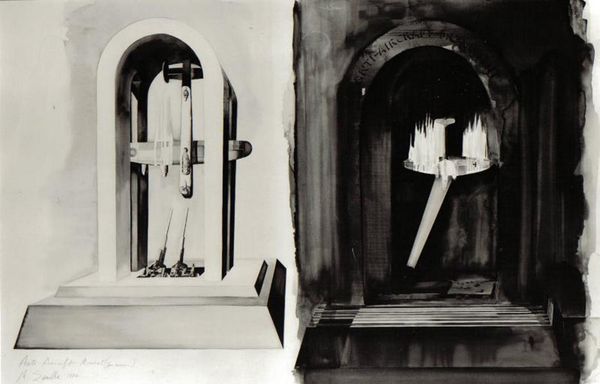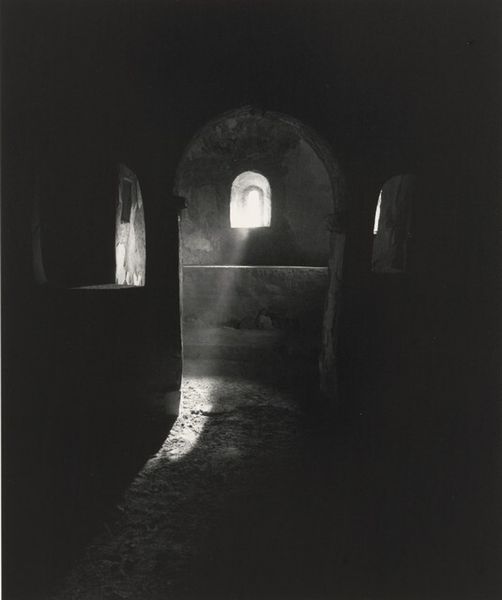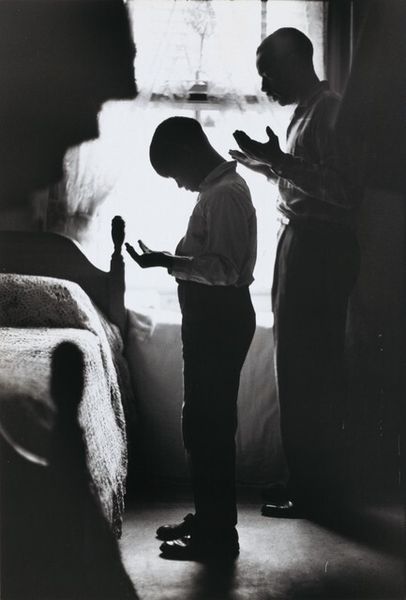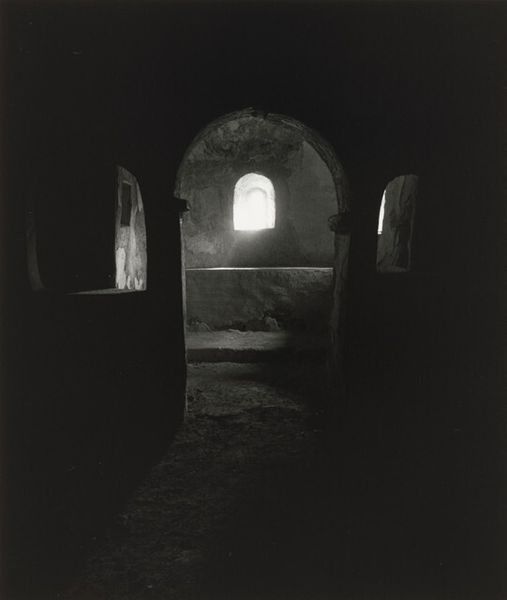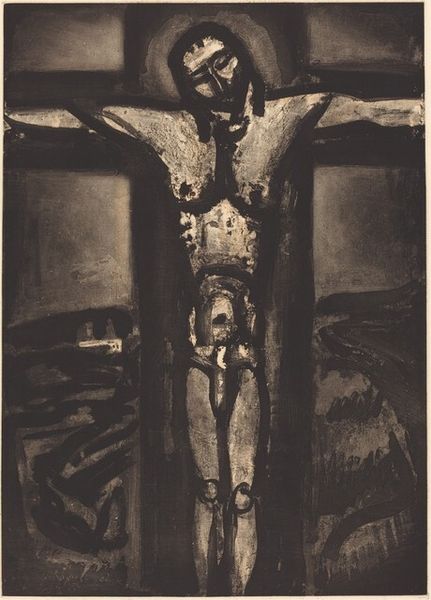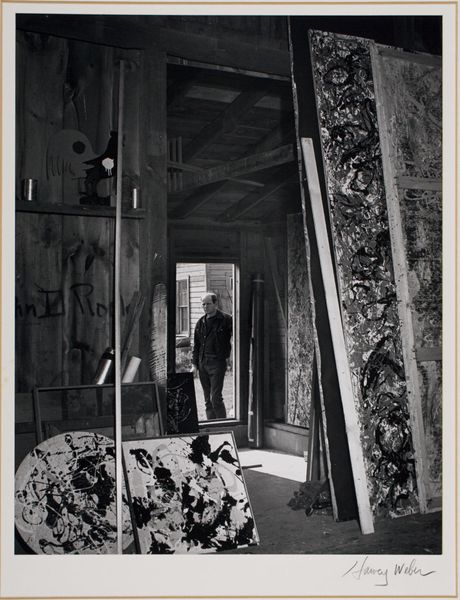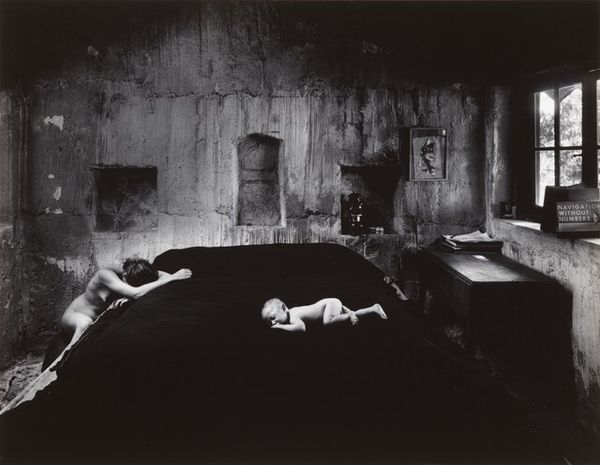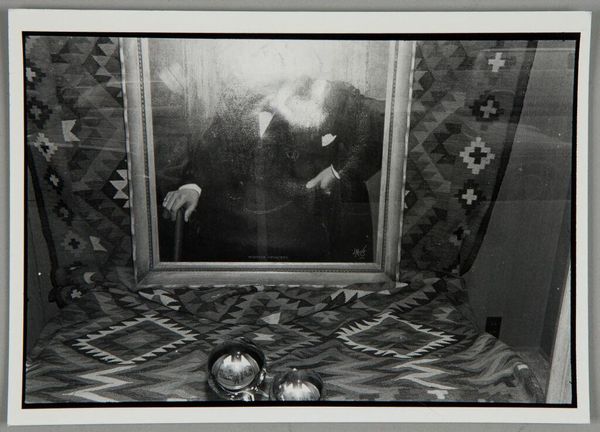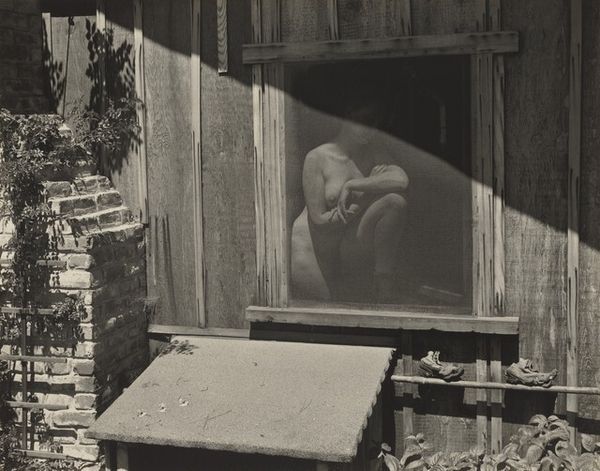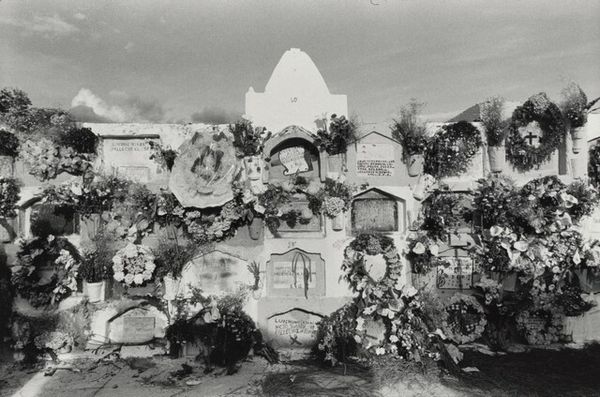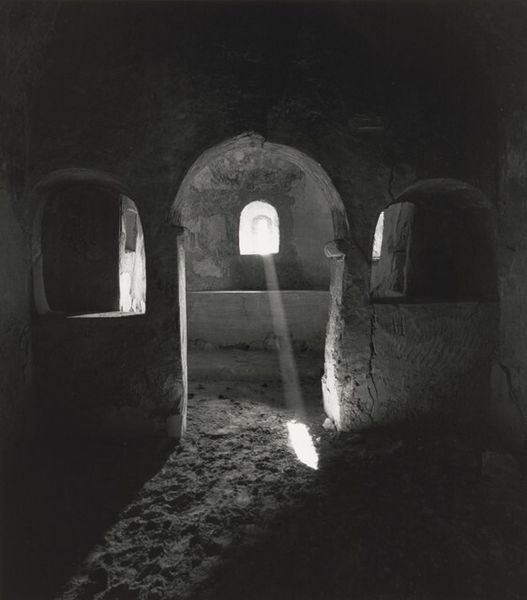
photography, gelatin-silver-print
#
black and white photography
#
sculpture
#
landscape
#
black and white format
#
photography
#
black and white
#
gelatin-silver-print
#
monochrome photography
#
monochrome
#
realism
#
monochrome
Dimensions: image/sheet: 28 × 21.59 cm (11 × 8 1/2 in.) mount: 45.5 × 35.5 cm (17 15/16 × 14 in.)
Copyright: National Gallery of Art: CC0 1.0
Editor: We're looking at Ansel Adams' "Interior, Penitente Morada, Abiquiu, Northern New Mexico," a gelatin-silver print from around 1930. It's a powerful image – the starkness of the black and white and the shadowy interior create such a solemn feeling. What stands out to you? Curator: What I find compelling is the photograph's complicated position in relation to cultural heritage. The Penitente Brotherhood, a lay religious group, had historically been quite secretive, and this image, taken during a period of increased outside interest in their practices, raises questions about representation and cultural appropriation. What do you notice about the visual elements themselves? Editor: The symmetry, perhaps? The crosses on either side, the altar in the center…it feels deliberately composed, like a stage set. Curator: Precisely. And that's where the history becomes so fascinating. Consider how Adams, an outsider, frames this space for a wider audience. The "authenticity" we perceive is carefully constructed, not just by the Penitentes but also by the photographer. How do you think the public perceived images like this in the 1930s? Editor: Maybe as a glimpse into a mysterious, almost forbidden world? A window into a tradition very different from mainstream American culture. Curator: Exactly. The photograph then participates in the broader romanticization of the American Southwest and its indigenous cultures, often glossing over the complex realities of power dynamics and cultural preservation. Do you think the photograph might influence our perception of their rituals and practices today? Editor: It’s hard to say for sure, but it does provide a tangible, visual connection to their history. Though now that I’m thinking about it, maybe a somewhat simplified one? Curator: A valuable lesson in considering whose perspectives are shaping the narrative we are presented with, I’d say! Editor: Definitely. This really made me consider the responsibility that comes with representing someone else's culture.
Comments
No comments
Be the first to comment and join the conversation on the ultimate creative platform.
